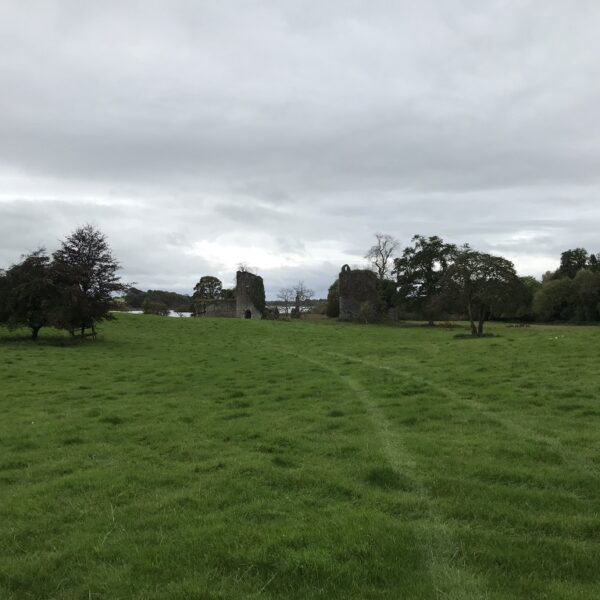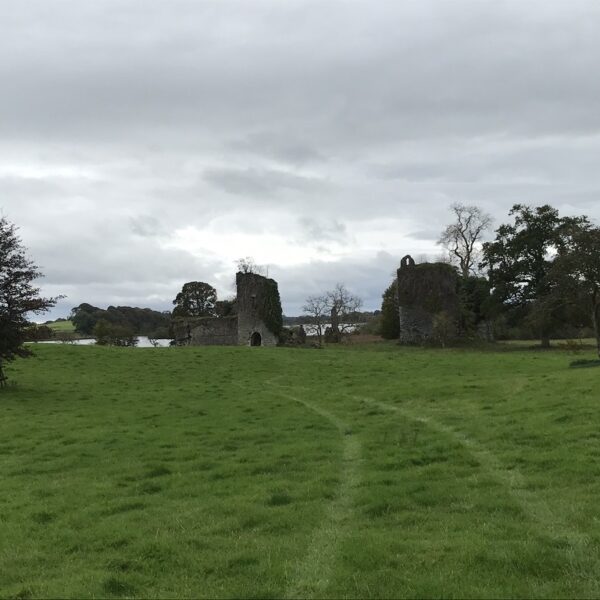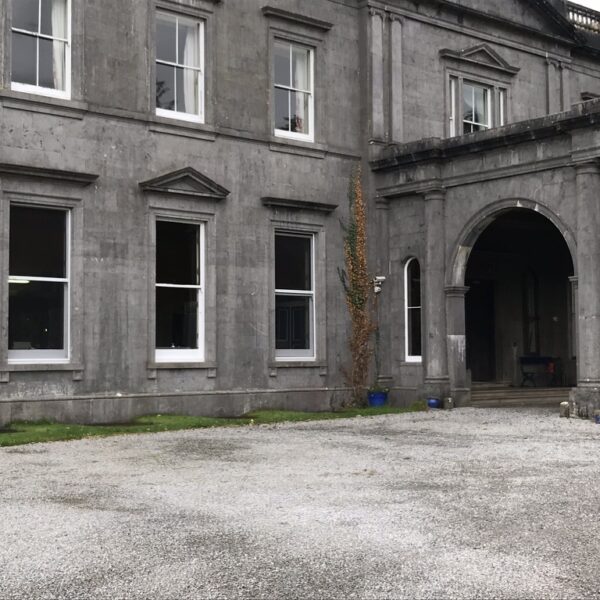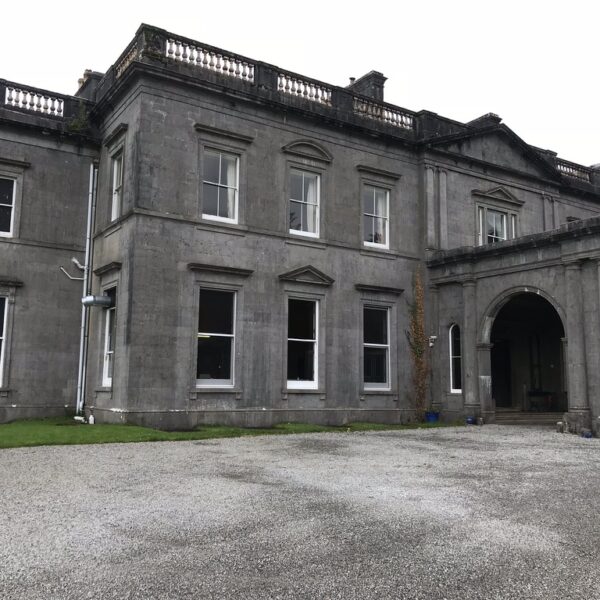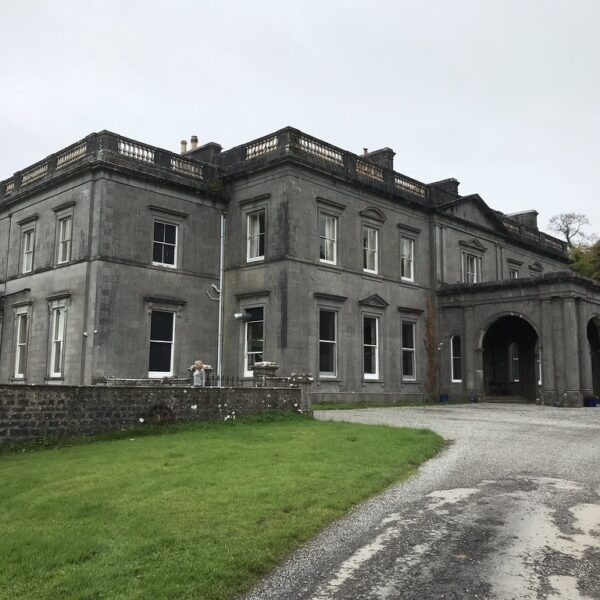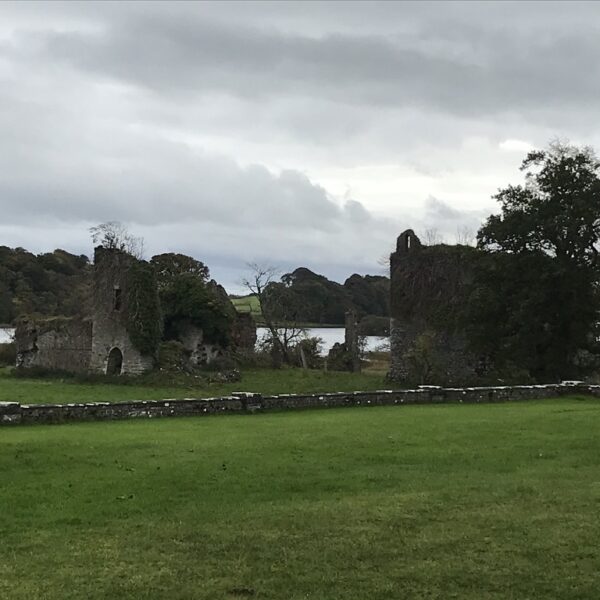Templehouse Manor
January 21, 2025 2025-07-10 2:51Templehouse Manor
Templehouse Manor
A Witness to Our Enduring Legacy
A Timeless Sentinel of History
Nestled amidst the serene landscapes of County Sligo, Templehouse Manor, and the ruins of its ancient castle, stand as a testament to centuries of Irish history, a story that weaves through the very fabric of our Ó Dubhda clan. From the ancient stones of the Knights Templar to the grandeur of the Georgian manor, this site resonates with tales of power, resilience, and the shifting tides of control in our ancestral lands.
I. Overview: Journey Through Time at Templehouse Manor
Templehouse Manor, overlooking a tranquil lake, invites you to delve into a complex past where different powers held sway, yet our Ó Dubhda legacy, in its various spellings (O’Dowd, O’Dowda, Dowd), remained intrinsically linked to the region. The estate, encompassing over 1,000 acres, showcases both the ancient fortified structures and the more recent elegance of a Georgian mansion. It’s a journey that takes you from the medieval fervor of the Knights Templar to the settled lives of later centuries, reminding us of the persistent spirit of the land and its people.
II. The Storied Past: Templehouse Through the Ages
A. Echoes of Early Fortifications and Shifting Ownership
The earliest known history of Templehouse centers around a rectangular, keepless castle built in 1181 near Ballinacarrow in south County Sligo. These lands were initially granted to the Knights Templar in 1216. When the Templars were disbanded in 1311, the property passed into the hands of the Knights Hospitaller. These crusading orders undertook extensive rebuilding, with their work, including vaulted chambers on the ground floor, still visible in the ruins today.
Following the departure of these knights, the property was rented to local chieftains, including the MacDonaghs and O’Haras, who held it in relative peace for approximately two hundred years. While the Ó Dubhda clan, known also as O’Dowd, O’Dowda, and Dowd, held sway over much of Sligo and Mayo, their influence and presence were undeniable in the broader regional landscape, even if specific direct ownership of Templehouse by an Ó Dubhda chief during this early period is not explicitly recorded. Our clan’s sphere of influence extended across northern Connacht, embracing areas like Tireragh, where many of our castles and strongholds stood.
B. The 17th Century and Beyond: Transition and New Beginnings
The 16th and 17th centuries brought turbulent times to Ireland, and Templehouse Castle saw its share of conflict, changing hands violently at times. In 1627, the castle was converted to a domestic residence, but it was besieged and badly damaged in 1641. The Perceval family, who still own Templehouse today, settled on the lands in 1665 through marriage. They rebuilt the old castle and resided there until 1760, when they constructed a new family home nearby, leaving the extended family and servants in the castle.
C. 19th Century and Legacy
The current Georgian mansion, known as Templehouse, was substantially rebuilt around 1825 by Colonel Alexander Perceval, a Member of Parliament for County Sligo. It was further extended and embellished around 1864, creating the impressive country seat seen today. While ownership shifted away from the Ó Dubhda clan generations ago, the history of Templehouse remains a part of the broader narrative of the lands where our ancestors, the Kings of Uí Fiachrach Muaidhe, once reigned supreme. Our clan, the Ó Dubhda, Ó Dowd, O’Dowda, or Dowd, were prominent from the 8th to the 15th centuries as Kings of Uí Fiachrach Muaidhe and later as Lords of Tír Fhiacrach, with 24 castles and 52 towns once under our dominion.
III. Architectural Marvels: Unveiling Templehouse’s Design
A. The Enduring Strength of the Castle Ruins
The ruins of the original Templehouse Castle offer a glimpse into its formidable past. Though rectangular and keepless, its strategic design was clearly intended for defense. The surviving vaulted chambers bear witness to the extensive rebuilding efforts by the Knights Hospitaller, demonstrating medieval engineering and the enduring strength of local stone construction.
B. Expansion and Adaptation: The Georgian Manor
In contrast to the medieval castle, the current Templehouse Manor is a magnificent Georgian mansion. This 19th-century construction, with its elegant proportions and extensions, reflects a later era of architectural trends, focusing on grandeur and comfort while still retaining a sense of historical presence. The mansion overlooks the earlier castle ruins, a symbolic nod to the continuous history of the site.
IV. Legends and Lore: Tales from Templehouse’s Shadows
While specific legends directly linking the Ó Dubhda clan to Templehouse Manor itself are not widely documented, the presence of resident ghosts and a mystical atmosphere is often noted by visitors. The long history of the site, from the Knights Templar to the present day, naturally lends itself to tales and whispers of the past, creating an undeniable aura of intrigue. The very name “Templehouse” evokes images of the ancient crusading orders, and the echoes of their presence still resonate within the estate. The surrounding region of Sligo is rich in Irish mythology, ancient stone circles, holy wells, and enchanted forests, making Templehouse a gateway to Ireland’s mystical heart.
V. Visiting Templehouse Manor Today: A Glimpse into the Past
Templehouse Manor today functions as a country guest house, offering a unique opportunity to experience centuries of history firsthand.
A. Location & Access
-
Location: Templehouse is located in Ballinacarrow, on the outskirts of Ballymote in south County Sligo, Ireland. It is situated on an impressive estate of over 1,000 acres, overlooking a 200-acre lake. It is approximately 20 minutes from Sligo city.
-
Accessibility: Templehouse primarily welcomes groups for exclusive takeovers and private rentals.
-
Opening Hours: As a guest house, access is for booked guests. It is advised to check their official website for current availability and booking information.
-
Admission: Costs vary depending on the type of booking (e.g., exclusive house rental or individual rooms).
B. What to Expect
Visitors to Templehouse can expect a truly unique and historic experience. The manor is filled with antiques and boasts a warm, inviting atmosphere. You can explore the vast grounds, including the picturesque, ivy-covered ruins of the Knights Templar castle by the lake, take a boat out on the lake, and enjoy miles of walking paths. The focus is on a relaxing and historical stay, with a strong emphasis on the natural beauty and rich past of the estate.
C. Important Considerations
-
Footwear: As there are miles of footpaths and opportunities to explore the grounds, sturdy walking shoes are recommended.
-
Respect Private Property: While the estate is extensive, guests should be mindful that it is a private family home.
-
Booking in Advance: Given that Templehouse often hosts exclusive group bookings, it is crucial to book well in advance, especially if you are seeking a private rental.
Templehouse Manor
Teampall Tí (House of the Temple)
54°06'48.8"N, 8°35'07.9"W
Ballinacarrow, Templehouse Demesne
Ballymote, County Sligo, Ireland
Keepless rectangular fortified castle
Rebuilt with vaulted chambers by the Knights Hospitaller
c. 1181 (initial construction)
Granted to Knights Templar in 1216; Rebuilt by Knights Hospitaller post-1311
Damaged in 1641
Besieged during rebellion; later incorporated into manor
Ruins exist adjacent to 19th-century Georgian manor
Situated on private estate
Advance booking required for access
Castle ruins viewable by guests staying at the manor
Part of broader Ó Dubhda dominion across northern Connacht
Nearby Tireragh held numerous O'Dubhda castles
Historical presence in region despite lack of direct ownership
Reflects influence of the Ó Dubhda over the wider Sligo landscape
Templehouse Manor and its castle ruins offer a rare dual narrative of military and domestic Irish architecture, tracing the evolution from medieval stronghold to Georgian grandeur. It symbolizes the cultural layers embedded in Ó Dubhda ancestral lands.

